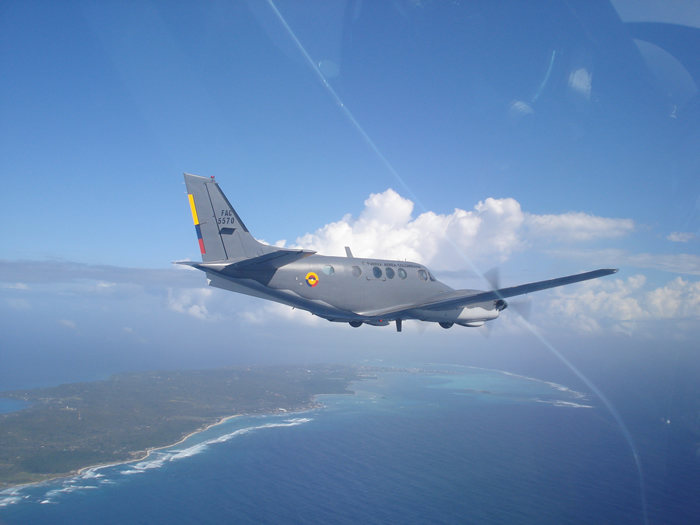Prototype of Bipolar Electrocardiograph for Academic Use
DOI:
https://doi.org/10.18667/cienciaypoderaereo.140Keywords:
Academic, Bipolar, Digital, ElectrocardiographAbstract
For preparation of medical and biomedical personnel in the acquisition, processing, display and storage of cardiac signals, the technology offers a number of computers and devices of high quality and high cost, besides being assembled compactly which prevents from understanding the internal signal processing. It is for this reason that the Telemedicine Research Group of Nueva Granada Military University, aware of the importance of providing learning tools for medical equipment has designed an electrocardiograph for academic use with low-cost nodular technology. The results achieved with medical, electronics, biomedical and telecommunications students are highly satisfactory and have allowed them to assemble and disassemble the electrocardiograph, by troubleshooting practices and fulfilling the objective of the methodology of learning by doing, to master the acquisition processing, display and storage of cardiac signals.
Downloads
References
Acierno, L. J. (1994). The history of cardiology, pp. 597-697. London; New York: Parthenon Publishing Group.
Arango, J. J., Vélez, H., Rojas, W., Borrero, J., y Restrepo, J. (2003). Fundamentos de Medicina: Manual de Electrocardiografía, 344.Medellín, Colombia: Corporación para Investigaciones Biológicas.
Becerra, J. A. (2007). EGC móvil utilizando tecnología Inalámbrica. Bogotá, Colombia: Universidad Militar Nueva Granada.
Correa, C. A., Bolaños, R. A., y Escobar, A. (2007). Análisis de esquemas de filtrado análogo para Señales ecg. Scientia et Technica, 5 (37).
Edminister, J. A., Nahvi, M., Navarro, R. S., Sánchez, E. L., y De Miguel Rodríguez, P. (1997). Circuitos eléctricos, 3 (2). McGraw-Hill.
Fluke Biomedical PS420. [En línea] Disponible en http://es.flukebiomedical.com/Biomedical/usen/About/Press/PS420+press+release.htm. Recuperado el 25 de noviembre de 2014.
L. Finance, C. (1975). El cuerpo humano primera parte: corazón y sistema circulatorio.
Lozano, F. A; Rondón C. R. (2008). Diseño de sistema detector de taquicardia Ventricular y envió de mensaje a celular. Bogotá, Colombia: Universidad Militar Nueva Granada.
Melo, H. y Maya, A. (2009) Dispositivo para telemetría de señales biológicas que permite la utilización de diferentes tecnologías. Bogotá, Colombia: Universidad Militar Nueva Granada
PROTEUS ISIS52. (2008). Labcenter Electronics Ltd, version 8.1, [CD-ROM]. Programa computacional.
PS420 Simulador de Paciente. [En línea] Disponible en http://es.flukebiomedical.com/biomedical/usen/Biomedical/FBSIMS/PS420.htm?PID=56628 Recuperado el 25 de noviembre de 2014.
Salazar Muñoz, Y. (2004). Caracterización de tejidos cardíacos mediante métodos mínimamente invasivos y no invasivos basados en espectroscopia de impedancia eléctrica. Barcelona, España: Universidad Politécnica de Cataluña.

Downloads
Issue
Section
Categories
License
Assignment of Copyrights
Authors assign Ciencia y Poder Aéreo journal the exclusive rights (reproduction, distribution, public communication, and transformation) to exploit and commercialize their work, in whole or in part, in all the formats and modalities of present or future exploitation, in all languages, throughout the life of the work and throughout the world.
All contents published in Ciencia y Poder Aéreo journal are licensed under a Creative Commons Attribution 4.0 International License, whose complete information is available at http://creativecommons.org/licenses/by/4.0/
Under the terms of this license, users are free to download, print, extract, archive, distribute and publicly communicate the content of articles, provided that proper credit is granted to authors and Ciencia y Poder Aéreo, scientific journal of the Graduate School of the Colombian Air Force. Except when otherwise indicated, this site and its contents are licensed under a Creative Commons Attribution 4.0 International License.
For other uses not considered under this license it is required to contact the Director or the Editor of the journal at the e-mail address cienciaypoderaereo1@gmail.com.
The Graduate School of the Colombian Air Force and this publication are not responsible for the concepts expressed in the articles, including the metadata or the affiliation stated by authors. This is the full responsibility of the authors.





















